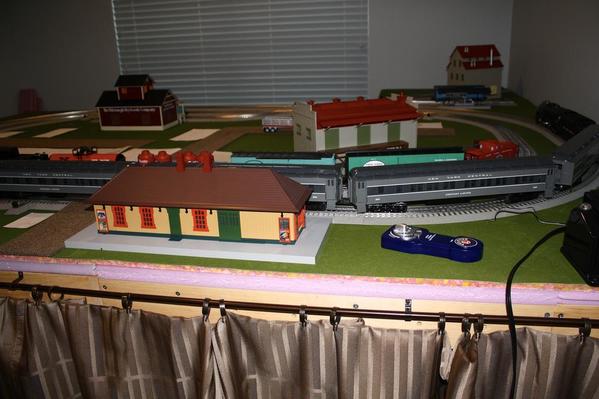I think the OP left out some info causing confusion, specifically what will be under the foam, and I think a lot of folks are saying what they "think" vs what they "know". This is often the case here because people tend to fall back on what they've always done or what the various books suggest. For example, 1x4 vs 2x4 framing, 1/2" vs 3/4" plywood decking, cork vs foam vs rubber roadbed, layout height, etc.
That said, I used 1" foam a top of a 12"x12" grid of 1x3s for 2 sections that were 48"x96"/48"x72" and bolted together for my Christmas layouts for over 2 years. I chose the 12" grid because I had no prior experience with foam. I have no doubt a 16" grid would have worked just fine. What I don't know is if a 48"x96" frame with crossmembers at 16" or 24" would have worked as well because there would have been sections 16"x48" or 24"x48" not 12"x12" or 16"x16". I don't how the foam would have stood up over time to a heavy engine sitting lengthwise between the crossmembers.
I do have a 48"x48" temporary test module set up with a single crossmember in the center resulting in 2 sections that are 24"x48". I've set some heavy items on top for short periods with no problems. What I did get with my Christmas layout though was a lot of noise resonating below the layout. For that reason alone, I would not use foam again without at least a 1/2" layer of plywood and perhaps a 1/4" layer would also work.
I also have little doubt that one could build modules of any length that are 30" wide with crossmembers on 16" centers if weight is a factor and not have any problems over time. However, one does have to worry about dents. Drop something on foam and it will dent. Just moving a small building around and hitting the foam with a corner will leave a dent or scratch. I moved my sections around several times over the 2 years I had it and there are plenty of dents from when I bumped up against doorknobs, etc. These were covered by the batting I used for snow, but it's something to consider if the layout will be moved.










